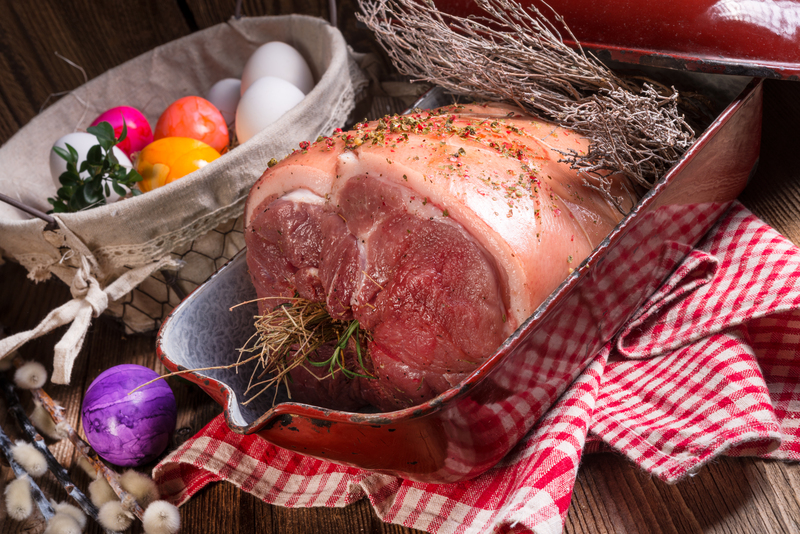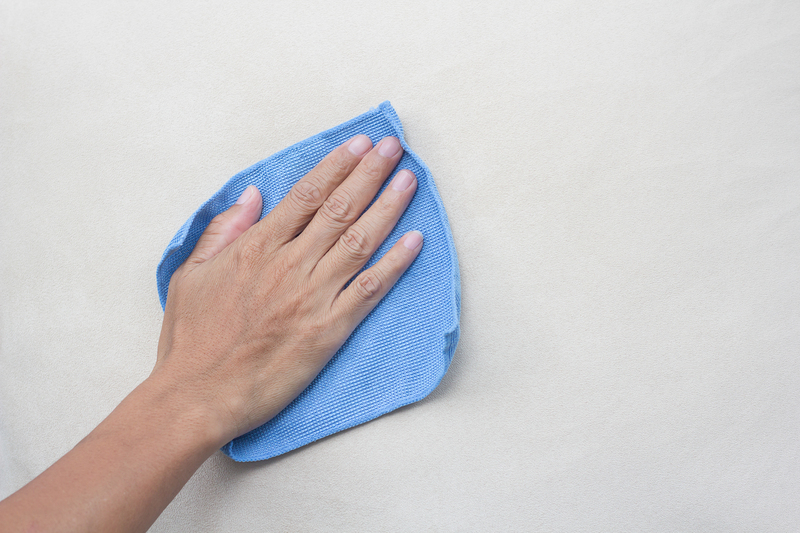Optimize Your Window Cleaning for Flawless Results
Posted on 30/08/2025
Optimize Your Window Cleaning for Flawless Results: The Ultimate Guide
Streak-free, sparkling windows can transform the ambiance and curb appeal of any home or business. Whether you're a homeowner seeking to maximize natural light or a professional aiming for client satisfaction, knowing how to optimize your window cleaning routine is essential for flawless results. In this comprehensive guide, discover the top techniques, best tools, and expert advice for truly impeccable window cleaning.

Why Window Cleaning Optimization Matters
Clean windows aren't just about aesthetics. Properly optimized window cleaning delivers numerous benefits:
- Enhances Natural Light: Dirt and smudges can block sunlight, making interiors look gloomy. Pristine glass lets in more natural light.
- Improves Energy Efficiency: Optimized cleaning removes grime that can cause windows to overheat and compromise insulation.
- Prolongs Window Lifespan: Dirt, minerals, and environmental pollutants can degrade glass and frames over time if not regularly removed.
- Showcases Your Property: Whether residential or commercial, flawless windows boost curb appeal and create a lasting impression.
Preparation: The First Step to Flawless Window Cleaning
Effective window cleaning always starts with thorough preparation. Skipping key preliminary steps can lead to streaks, scratches, and less-than-perfect results. Here's how to set yourself up for window cleaning success:
Gathering the Right Window Cleaning Tools
- Microfiber Cloths: These are gentle on glass and highly absorbent, minimizing lint and streaks.
- Professional Squeegee: Invest in a good-quality squeegee for smooth, streak-free finishes.
- Scrubber or Sponge: Use a non-abrasive scrubber to loosen dirt and debris.
- Bucket: Large enough to dip your tools, but light enough to portable carry.
- Cleaning Solution: You can use a commercial glass cleaner or make a DIY solution with distilled water, a splash of dish soap, and a little vinegar.
- Extension Pole: Necessary for reaching high or large panes.
- Step Ladder/Stable Platform: Always use safety equipment for tall or hard-to-reach windows.
Inspecting Your Windows First
Safety first! Check for cracks, loose glass, or damaged frames. Remove screens and rinse them separately.
Mastering the Window Cleaning Technique
Step-by-Step Guide to Optimized Window Washing
-
Remove Surface Dust and Cobwebs:
Use a soft brush or dry microfiber cloth to clear away dust, webs, and loose debris. This step prevents dirt from turning into muddy streaks when you apply your cleaner.
-
Apply the Cleaning Solution:
Generously wet your sponge or scrubber with cleaning solution and apply it to the glass, working from the top down. *Be sure to cover every inch!* Avoid over-saturating to reduce drips.
-
Use a Squeegee for Flawless Results:
Start at the top left corner. Pull your squeegee across the glass in a reverse-S motion, wiping the blade with a lint-free cloth after each pass (this crucial step prevents streaks).
-
Buff the Edges:
Use a dry microfiber cloth to wipe around window edges and catch any remaining moisture.
-
Treat Stubborn Spots:
For stuck-on debris or hard water stains, gently rub with a paste of baking soda and water, then rinse thoroughly.
Pro Tips for Optimal Window Cleaning Results
- Work on a Cloudy Day: Direct sunlight causes cleaners to dry too quickly, leading to streaks. Overcast weather gives you more working time and flawless windows.
- Change Your Water Frequently: Dirty water equals dirty windows. Replace your cleaning solution as needed.
- Clean in Sections: For large or multi-pane windows, clean in manageable sections to prevent solutions from drying out before wiping.
- Don't Forget the Frames and Sills: Dust and mold love to accumulate in crevices. Wipe down window frames and sills with a damp cloth for a complete clean.
DIY Window Cleaning vs. Professional Window Cleaning
DIY Window Cleaning Optimization
If you enjoy a hands-on approach, the steps above will help you achieve flawless results. Advantages of DIY window cleaning include:
- Cost Savings: Save on service costs by doing it yourself.
- Scheduling Flexibility: Clean on your own timetable.
- Customization: Pay attention to areas that matter most to you, like pet nose prints or pollen build-up.
Why Hire a Professional Window Cleaning Service?
For multi-story homes, complex windows, or just for sheer convenience, a pro service has merits:
- Experience: Professionals know how to optimize window cleaning for different glass types and environmental conditions.
- Safety: They're equipped for high or awkward windows--no balancing on ladders for you.
- Speed and Consistency: Trained crews deliver flawless, streak-free results every time.
Tip: Even if you prefer to clean your own windows, a yearly professional deep-clean can help maintain glass clarity and longevity.
Advanced Optimization: Tackling Common Window Cleaning Challenges
How to Get Rid of Streaks for Flawless Glass
- Use Distilled Water: Tap water contains minerals that cause streaks and spots. Distilled water ensures a cleaner finish.
- Choose the Right Cleaner: Avoid ammonia or alcohol-based cleaners that can leave residue. A mix of vinegar and water is both effective and eco-friendly.
- Proper Drying: Always use a dry, clean microfiber cloth for final buffing.
Handling Hard Water Stains
Hard water stains appear as cloudy patches caused by mineral deposits. To remove them:
- Spray with equal parts white vinegar and water.
- Let soak for 5-10 minutes, then scrub gently with a non-scratch pad.
- Rinse and squeegee as usual.
Cleaning Window Screens for Optimal Clarity
- Remove screens and lay flat.
- Gently scrub with soapy water and a soft brush.
- Rinse thoroughly and air dry before reinstalling.
Dealing with Persistent Smudges and Oily Residue
Kids' fingerprints and pet noses can leave oily smear marks. For such messes:
- Use a small amount of rubbing alcohol on a microfiber cloth to spot-clean greasy residue.
- Finish with your regular window cleaning solution.
Seasonal Optimization Tips for Window Cleaning
Spring and Summer
- Allergens, pollen, and bugs can quickly accumulate. Clean more frequently as needed.
- Check windows for signs of condensation and clear any spider webs before washing.
Fall and Winter
- Remove leaves and debris from sills and tracks.
- On cold days, use lukewarm water and avoid cleaning when temperatures are below freezing.
Eco-Friendly Window Cleaning Optimization Techniques
Greener cleaning practices benefit both your health and the environment. Here's how to optimize your window cleaning sustainably:
- Choose Biodegradable Cleaners: Opt for plant-based, non-toxic solutions or make your own with vinegar and water.
- Minimize Paper Towels: Switch to reusable, washable microfiber cloths.
- Recycle Water Where Possible: Use leftover cleaning water for outdoor plants (if the solution is gentle and non-toxic).
Essential Maintenance for Long-Term Flawlessness
Routine Cleaning Schedule
- Residential Windows: Clean inside and out at least twice a year; more often if you live near highways or coastal areas.
- Commercial Properties: Monthly or biweekly cleans are best for storefronts, lobbies, and high-traffic areas.
Inspect and Repair Caulking & Seals
Regularly check window seals for gaps or deterioration. Maintaining the integrity of these seals will prevent leaks, drafts, and condensation buildup.
Safety Tips for Flawless & Secure Window Cleaning
- Always use a sturdy ladder on flat ground. Never overreach.
- Wear gloves for hand protection and non-slip shoes for stability.
- For high-rise cleaning, always use proper harnesses and safety equipment.

Optimize Your Window Cleaning: Frequently Asked Questions
Is newspaper good for cleaning windows?
While newspaper was once popular, it can leave ink residue and doesn't match the scratch-free finish provided by modern microfiber cloths.
What's the best homemade window cleaner?
Mix 1 part distilled white vinegar with 2 parts distilled water and a tiny dash of dish soap. This solution is streak-free, non-toxic, and highly effective.
How do I prevent streaks on my windows?
Use a squeegee, always wipe the blade between each pass, avoid cleaning in direct sunlight, and finish with a dry microfiber buff.
How often should I professionally clean my windows?
For most homes, every six to twelve months is ideal. For businesses, frequent cleanings may be necessary for ongoing flawless window results.
Conclusion: Take Your Window Cleaning to the Next Level
Achieving flawless window cleaning results isn't just about elbow grease--it's about optimizing each step of the process with the right techniques, tools, and care. From proper preparation to investing in commercial-grade tools and eco-friendly solutions, every detail helps deliver that crystal-clear shine. Whether you prefer the DIY approach or depend on professional services, following the expert advice in this article will help you optimize your window cleaning routine and ensure your glass always sparkles. Transform your home or business with windows so clear, you'll barely know they're there!
Ready to optimize your window cleaning for flawless results? Gather your gear, follow these tips, and enjoy the clarity that only expertly cleaned glass can offer!




